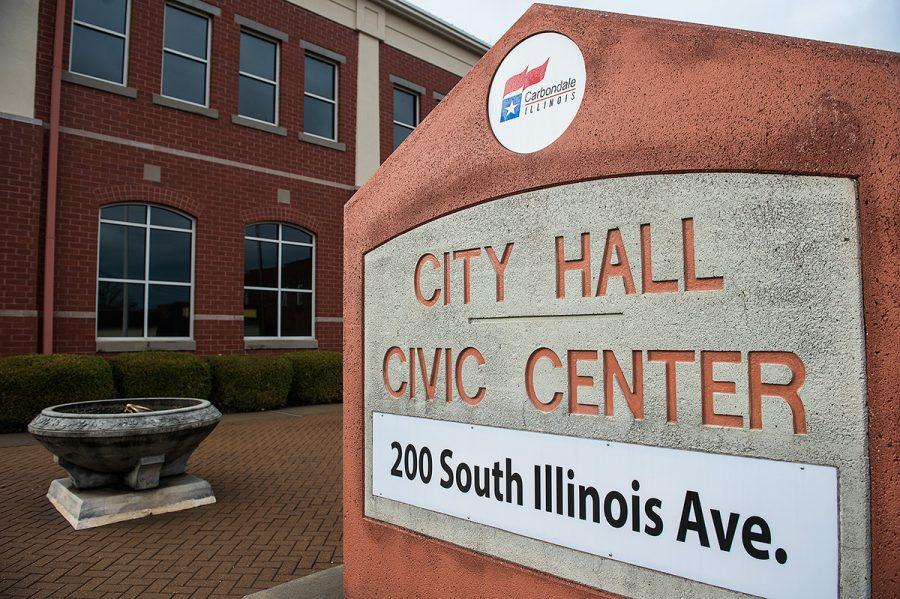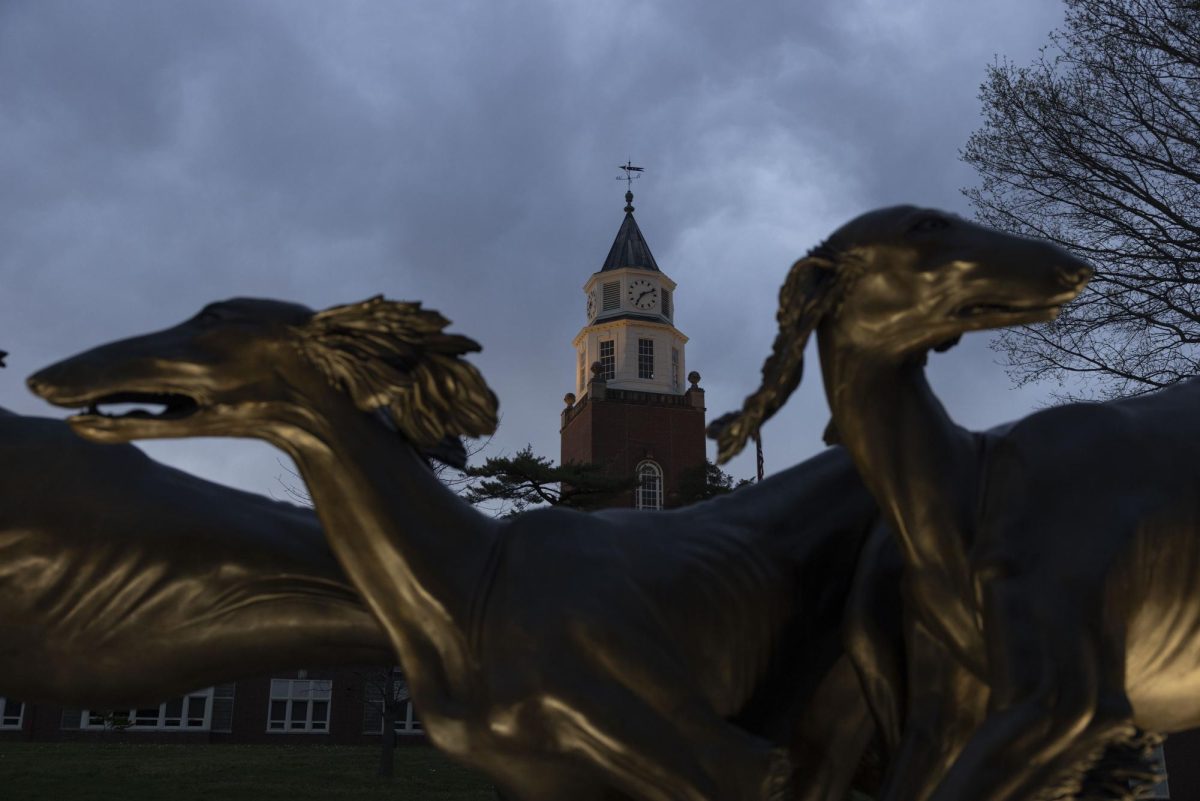In Carbondale’s city elections, low voter turnout is a historical trend
March 31, 2017
Carbondale’s City Council election commences Tuesday with three incumbent candidates and one newcomer running for the three open seats, but if past municipal election results are any indication, less than 30 percent of registered voters will show up to vote.
“Turnout is pathetic in these elections,” said John Jackson, an emeritus professor of political science at the Paul Simon Public Policy Institute. “It always has been, and, if anything, it’s getting worse.”
In 2009 and 2013, when city council races did not coincide with a mayoral election, overall voter turnout was 30 and 34 percent, respectively.
Advertisement
The numbers were even lower in the five predominantly-student precincts, where turnout ranged from less than one percent to 14 percent of registered voters, according to data from Jackson County’s election results archive.
This is an issue for local elections nationwide; a study launched in 2015 by Portland State University found that out of 50 major U.S. cities, only five saw a mayoral election turnout greater than 40 percent.
Another study from University of Wisconsin researchers published in Governing Magazine in 2014 shows that average voter participation has been declining, going from 26 percent in 2001 to 21 percent in 2011.
Carbondale election data shows the same. In the 2007 mayoral race, turnout was 31 percent. In 2011, it fell to 26 percent, and in 2015 it hit 21 percent. Carbondale Mayor John “Mike” Henry won with 14 percent of registered voters, amounting to 1,622 votes.
Jackson said lackluster turnout in municipal elections is ironic because it contradicts conventional American political culture.
“Traditionally, it’s been said that government which is closest to the people is the best government and the government people should have interest in and confidence in,” Jackson said. “The facts of life are somewhat different. It turns out there is the least interest in and knowledge of local government.”
In 2014, Illinois passed a law allowing for same-day voter registration in an attempt to increase turnout. Residents can register to vote in Carbondale’s City Council election at the Civic Center through Election Day on April 4.
Advertisement*
Part of the problem, Jackson said, is that people don’t understand the direct impact local government officials have on their daily lives, which can lead voters to view municipal elections as inconsequential.
“Most of where they contact government in their daily lives comes from a local function of government,” Jackson said. “We have failed to educate people adequately.”
One example where local government has significant control is in school funding. According to a 2016 report from the Illinois School Funding Reform Commission, local sources accounted for 65 percent of funding for schools while state and federal sources accounted for 25 percent and 10 percent, respectively.
Jackson County Clerk Larry Reinhardt said the low turnout is also a result of poor publicity.
“With the federal and state elections, you’ve got legislators and congressmen running advertisements nonstop,” Reinhardt said. “People know when Election Day is. For locals, when there’s very little advertising, people tend to ignore them or forget about them entirely.”
Reinhardt said it’s up to the candidates to get their voters to go to the polls, but it can be a time-consuming and expensive endeavor that local candidates may not have resources for.
“It’s a catch-22,” Reinhardt said. “These are the districts that set our property taxes, that make decisions about our children’s educations, but they just tend to be forgotten about.”
Reinhardt said he can’t remember the last time there was a significant student turnout in a local election.
“They only come out when referenda on the ballot may affect them,” Reinhardt said. “For example, there were a couple elections some time ago when we had bar-entry age on the ballot.”
“But otherwise, they don’t seem to focus a lot on the city races, likely because they’re going to be gone in a year or two and aren’t as worried about the long term.”
When fewer voters show up for municipal elections, Jackson said it increases the power of local interest groups who have specific concerns about the city, such as budgetary issues. It also gives the local newspaper more power, he said, because those who read it tend to be the most interested in keeping up with local government and the newspaper’s coverage, or lack thereof, of elections has more effect.
Low-turnout city council elections also tend to result in less minority representation, according to “America’s Uneven Democracy: Race, Turnout, and Representation in City Politics,” a 2010 research publication from University of California San Diego professor Zoltan Hajnal. Hajnal’s work said when fewer people vote, those that do vote tend to be affluent, older and white.
Hajnal found that nationwide, higher local election turnout tends to result in city councils being more diverse, with increased Latino and Asian-American representation and decreased white representation.
“There’s clearly a class and educational and racial bias; the more diverse voters are, the more diverse representation will be,” Jackson said. “Most political scientists would agree that affects the content of public policy.”
Hajnal’s research suggests the same — when municipalities have higher election turnout rates, they tend to spend more money on welfare programs.
Jackson said the timing of local elections also discourages voter awareness and participation.
“We put them in an obscure part of the calendar and hide them away in February and April; at minimum, we ought to have it at the same time we elect the governor,” Jackson said. “It’s to keep voter turnout down. They wouldn’t admit that, but that’s either the intended or unintended consequence.”
Every few years, Reinhardt said he and other election officials propose moving the local election dates to coincide with national and state election dates to try to increase turnout. This would require a change in state law, which regulates all election cycles and codes.
Reinhardt said these proposals have never made it far due to opposition from local districts.
“If schools need to pass a tax referendum or other measure, they have to have an election,” Reinhardt said. “If there’s no election at all in an odd year, they may have to wait 14 or 15 months to put that question before voters.”
Regardless of when they take place, Reinhardt said voter participation is vital.
“Because it’s a lower turnout, a vote tends to have more sway,” Reinhardt said. “One vote can make a much bigger difference, so a person can certainly have more control if they just vote.”
Staff writer Marnie Leonard can be reached at mleonard@dailyegyptian.com or on Twitter @marsuzleo.
To stay up to date with all your SIU news, follow the Daily Egyptian on Facebook and Twitter.
Advertisement









